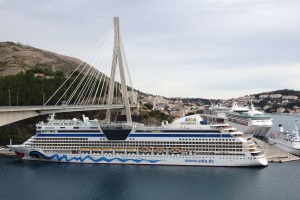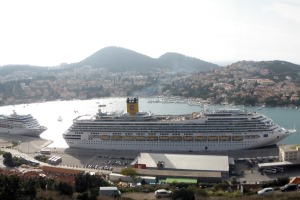

The Republic of Croatia counts six ports open for public traffic of outstanding (international) economic importance and those are the ports: Rijeka, Zadar, Šibenik, Split, Ploče and Dubrovnik. The State budget of the Republic of Croatia invested in those ports during the period 2004-2007 a total amount of over EUR 52 million for the construction of capital infrastructural project . During the period of 2001 – 2005 the investments in port infrastructure amounted up to EUR 67 million and for the time of 2006-2013 the planned investment for the six ports will reach the total sum of EUR 531 million.
Rijeka
The Port of Rijeka is a development-oriented port with port basins specializing in different cargo types, managed by highly motivated and high-quality concessionaires-operators capable of acquiring sufficient cargo and passengers to ensure the occupancy of modern and competitive port capacities.
In a transport sense, Rijeka is the biggest Croatian port. In the port, large quantities of various cargoes are handled, including containers, ore, lumber, wheat, phosphates and crude and refined petroleum products. All types of ships, including tankers, dry cargo ships, container ships, general cargo ships, passenger and Ro-Ro ships are accepted at its 39 berths.
Zagreb Pier Deep Sea Container Terminal – With the aim of keeping up pace with the competing ports, the Port of Rijeka Authority has begun the realization of a new Deep Sea Container Terminal, thus ensuring new port capacities. This is the most significant object of the Rijeka Gateway Project, conceived as a straight pier with a final length of 680 m and an average width of 300 m. The planned sea depth at the pier is at least 20 m, which allows for the reception of container ships of all sizes. The terminal is built in two phases, with the first phase involving the construction of a 400-m-long pier and the second phase involving the construction of an additional 280 m. Upon completion of both phases, the Port of Rijeka will boast a pier with a total length of 680 m. The construction of the first phase is in the final stage, and simultaneously, the railway terminal interface will be reconstructed and the connecting road D-403 will be built. The continuation of construction of the remaining phases is the obligation of the future concessionaire. The concessionaire, selected in an international tender, will receive a concession for the management, construction and use of the new container terminal.
Adriatic Gate Container terminal - Specialized in container handling and equipped with state-of-the-art equipment, dockside and warehouse cranes, as well as mechanization for train transhipment. With the joint investment of the Port of Rijeka Authority (terminal infrastructure) and the concessionaire (transhipment equipment), the 2nd stage of the terminal was completed, which increased the terminal capacity and ensured efficiency in the transhipment of containers. A new 330-m-long pier with a sea depth of 14,8 m was built and put into operation, as well as a new storage area and an entry/exit gate. The terminal now has a total area of 17 hectares, a wharf with two berths and a total length of 630 meters, and a direct link to the motorway to Zagreb. The completed investments into the terminal as well as the ongoing investments into railway infrastructure aim to increase the intermodal capacity of the Adriatic Gate Container Terminal.
The operator of the container terminal is the international concessionaire Jadranska vrata d.d. (Adriatic Gate Container Terminal), whose majority owner is ICTSI (International Container Terminal Services Inc.), with whom a strategic partnership contract was signed in 2011.
Terminals for general cargo, bulk cargo and livestock are located in port basins Rijeka, Bakar and Raša. The operator of these terminals is also an international concessionaire, Luka Rijeka d.d., whose largest individual shareholder and strategic partner since mid-2015 is the Polish company OT LOGISTICS S.A.
Terminal for liquid cargo - Has two tanker berths with a depth of 30 meters which can accept the largest of tankers without limitation. Each berth has four loading arms for crude oil and two for petroleum products.
In the Port of Rijeka, there is an ongoing realization of a series of development projects for the modernization of strategic port facilities, aimed at producing direct and indirect economic effects, the most important of which are (i) the Rijeka Gateway Project, and (ii) the projects financed from the European Union funds.
Rijeka Gateway Project
In cooperation with the International Bank for Reconstruction and Development (IBRD), the Government of the Republic of Croatia has launched the Rijeka Gateway Project. Apart from the modernization of the port area, the Loan anticipates the construction of roads to the Port of Rijeka and the procurement of necessary port equipment. The reconstruction and modernization of the port area includes the modernization of the terminal for general cargo, relocation of the terminal for timber from Delta and Porto Baroš, and development of a nautical/passenger terminal.
The Rijeka Gateway programme is not intended solely for the construction and modernization of the port but has is designed to support the Croatian economy for it to become more dynamic and more competitive. This programme will also increase the attractiveness of the port city of Rijeka by balancing urban development, connection with the traffic corridor and development of the port. As a port, Rijeka is strategically positioned on the Mediterranean Corridor of the Trans-European Transport Network.
The total value of the port component of the Rijeka Gateway Project amounts to a total of 187 million EUR, of which 144 million EUR is the World Bank's loan (IBRD) and 43 million EUR the domestic share from the state budget of the Republic of Croatia.
Projects financed from the European Union funds – The Connecting Europe Facility (CEF)
The Port of Rijeka Authority has successfully applied six projects for CEF co-financing: (i) Update and development of infrastructure in the Port of Rijeka - development of a multimodal platform and connection with the Adriatic Gate Container Terminal, (ii) Update of the port infrastructure at the Zagreb Deep Sea Container Terminal, (iii) Update of the port infrastructure at the terminal for general cargo in Raša, (iv) Reconstruction of railway infrastructure in the Port of Rijeka – basin Rijeka, (v) Reconstruction of railway infrastructure in the Port of Rijeka – basin Bakar, and (vi) the Port Community system (PCS), with the total value of significant 115.650.393 EUR, of which 95.557.975 EUR (82% on average) is the share co-financed by the CEF funds.
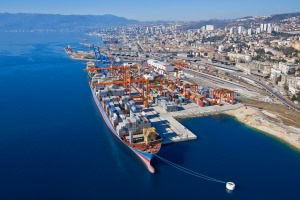
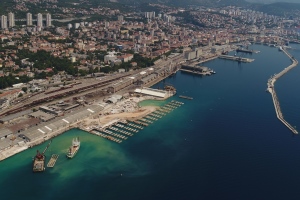
Ploče
Port of Ploce - Seaport of an international economic importance for the Republic of Croatia
Completed investments
- EUR 61 million invested in port suprastructure by the primary concessionaire Luka Ploce Plc
- EUR 23 million investment in the first phase of the new liquid cargo terminal with 50,000 cubic metres storage for clean petroleum products (CPP)
EUR 100 million investments underway
- The second phase of the new liquid cargo terminal with 200,000 cubic metres CPP storage and 60,000 cubic metres LPG storage
- Design of the new petroleum and liquefied petroleum gas jetty
Future investments
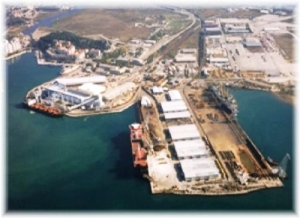
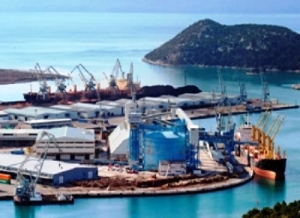
Zadar
Port of Zadar Authority governs the following port areas: Zadar - Old City passenger port, Passenger port of Gaženica Zadar (including loading and unloading locations for fishing boats), Cargo port of Gaženica and Fishing port Vela Lamjana Kali. Overall, the Zadar port has an annual turnover of approx. 2.7 million passengers and 430 thousand vehicles and more than 300,000 tons of freight traffic.
The idea for the development of a new passenger port Gaženica has began to be considered more than two decades ago due to the obvious lack of operating space in the Zadar Old City port.
The project consists of three phases:
The surface area of the new Passenger Port Gaženica amounts to approx. 100,000 m² and it is an extremely important non-urbanized area that is located only 3 km from the historic core of the City of Zadar. In 2009, construction on the new port infrastructure began. The first phase of the project, sea excavation and filling, was completed in 2010, phases II and IIIA were completed in the summer of 2014, the port with temporary facilities began with operative work at the end of March 2015., while the final phase completion ie LOT IIIB is expected mid 2018. By the end of all planned activities, only Lot IIIc was left, ie the construction of coastal walls between the new passenger port and the old cargo port in Gaženica. Overall, the value of the investment without Lot IIIC is estimated at approx. 178 million euros ( credit of EIB and KfW + own funds). Investor of the whole project is the Port of Zadar Authority with the guarantee of the Government of the Republic of Croatia.
Apart from the disburdening of the Old City Port and the historic core of Zadar, in the traffic, security and ecological context, the ultimate goal of this project was to create 1851 meters of new coastal line and four quays of approximately 13,500 square meters of new area with 11-13 meters of draft with the possibility of simultaneously accepting seven ships in domestic ferry traffic, two ships in international ferry traffic as well as three cruise ship. The terminal building will enable a better reception of passengers and vehicles in domestic and international ferry traffic as well as all operations typical for cruise ships for when Zadar becomes their home port. Furthermore, the building will enable the unification of all Public Services, in function to the port, in one place, such as the Maritime Police, Customs, Port Authority, Harbour Master's Office – which will further facilitate mutual coordination in order to simplify and speed up procedures for the end-users of the service.
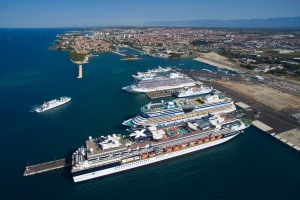
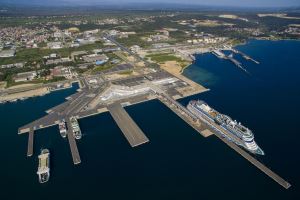
Šibenik
Vrulje Quay - renewed and reconstructed Vrulje Quay, length of 510 meters - looks very impressive and it has completely changed the vision of this part of Sibenik. Vrulje Quay is reconstructed and renovated from the EBRD loan in the amount of about 8,2 million EUR. It accommodates vessels of international and domestic passenger transport and cruise ships of up to 240 meters.
As the third phase of this project the Port of Sibenik Authority plans to build the Maritime Passenger Terminal building in the next two years. Third phase of the Maritime Passenger Terminal Project is the construction of a new two-storey passenger terminal which should start in January/2019. and be finished by May/2020. Total value of the MPT building is estimated at 4,3 mil. EUR and will be financed partly via commercial loan and partly via EU funds.
Since the cruise industry is in constant growth, new ports and terminals are in demand. New itineraries and destinations are searched by cruise lines and this is very beneficial for the ports, since smaller ports like Sibenik can promote themselves more actively. The increased attention for new itineraries influences the additional demand for terminals. Continuous modernisation of current terminals and investments in new facilities are expected. With Maritime Passenger Terminal Project, Port of Sibenik Authority fulfills this requirement as well.
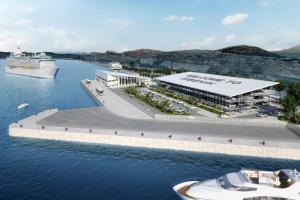
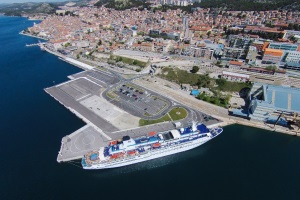
Split
PORT OF SPLIT INFRASTRUCTURE REHABILITATION PROJECT Extension and rehabilitation of the passenger wharves on the outer side of the breakwater in the City Port of Split
Nowadays annual traffic through the Port of Split reaches the number of more than 5 mil. passengers and 730 thousands of vehicles. National and international traffic in the port have been continuously increasing, showing further growing tendency. Consequently, it leads to the shortage of port facilities - infrastructure and superstructure, required to ensure regular servicing of traffic in city port of Split. In order to satisfy these requests and needs for port capacities development, and particularly aiming at improving the safety of flow of passengers and vehicles, and increasing the security of traffic in the port, Port Authority Split has launched the Port of Split Infrastructure Rehabilitation Project. The extension and rehabilitation of passenger berths at the outer side of the breakwater is directly aimed at increasing the propulsion features of Split city port, for land and for maritime traffic alike. The construction of wharves on the outer side of the breakwater in the city port of Split started in June 2014 and the works were divided in two phases. The first phase was completed in July 2016 and the second phase in March 2017. Two wharves for berthing of ships in national and international traffic of passengers and vehicles, and berthing of cruise vessels were constructed resulting in a larger operative area, which enables a better flow of passengers and vehicles, higher safety of traffic in the port and higher quality of port services.
The Contractor is Joint venture “Pomgrad inženjering“ d.o.o. Split and „Viadukt“ d.d. Zagreb.
Total value of the investment amounts to 23.347.366,98 Euro.
The Port of Split infrastructure rehabilitation project and the construction of passenger wharves is also the part of the investment strategy of the Croatian Government, aimed at providing support to the strengthening of traffic infrastructure and tourist network in Croatia, and therefore strengthening of the City of Split itself. The importance of efficient local traffic infrastructure is recognised as one of key elements in ensuring the quality of service and extension of tourist offer in Croatia beyond already famous tourist destinations.
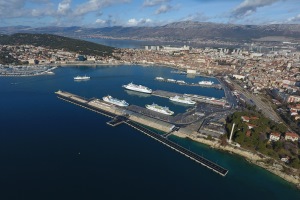
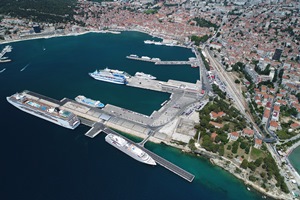
Dubrovnik
There is an ongoing project of modernization of the port of Dubrovnik , which includes the reconstruction of operating banks, and construction of facilities of the port and superstructure, forming the overall area of the port as a multipurpose commercial and tourist zone of strategic importance for the city and region.
The new part of the operational coast as part of the project Batahovina 1. was realesed in November 2011. It is 230 meters of new operational coast which enables that part of the port for the purposes of the ferry of the international and the domestic line of traffic, increases the possibility of accepting cruise ships, and at the same time decreasing turnover in Gruž Harbour.
In the construction and extension of the operating part of the coast at the port of Dubrovnik Gruž so far has been invested 34 million euros, and for the 2020. year , Dubrovnik Port Authority is planning the construction of the operational coast called Batahovina 2, the construction of a new operational coast in the length of 400 m with two ferry ramps, which continues on to the already built operational coast Batahovina 1.
The realization of infrastructure projects, part of the port within the bay of Gruž, plans to be earmarked exclusively for international and domestic passenger traffic, i.e. the ships on a criuse travel and luxury yachts, while the Batahovina area will be assigned as a ferry passenger port of great importance for the overall traffic image of the city , since the end the highway Zagreb-Dubrovnik would enable direct connection of the road and maritime transport, namely the organization of intermodal transport, which will be great progress in ecological and spatial-organizational sense for the city and County.
The final phase of the project modernization of the ports predict the construction of modern multipurpose terminal for cruise ships passengers in the area of the bay and the ferry terminal in the area of ferry berths, Batahovina, which will be accomplished with the participation of the interested concessionaires.
Port authority of Dubrovnik, in collaboration with partners, is preparing the project of construction of the plant to supply the ships with electricity from the mainland during their stay at the berth, which will significantly reduce the emission of harmful gases during the stay of the ships in the harbour and contribute to a better and cleaner environment.
It is also in progress the preparation of project documentation for energy renewal administration building which will significantly increase its energy efficiency. Target levels of increasing energy efficiency is 60%.
